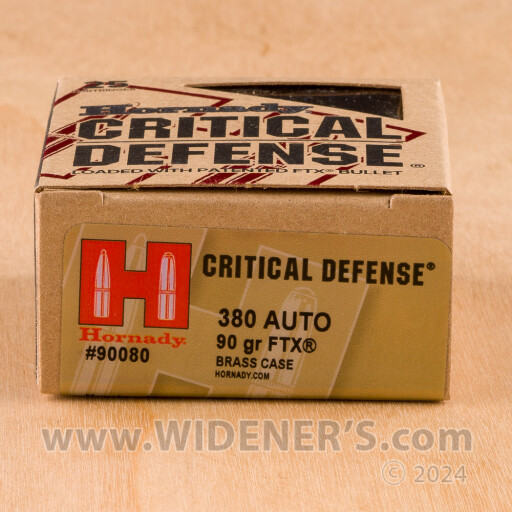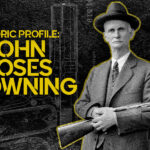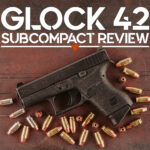
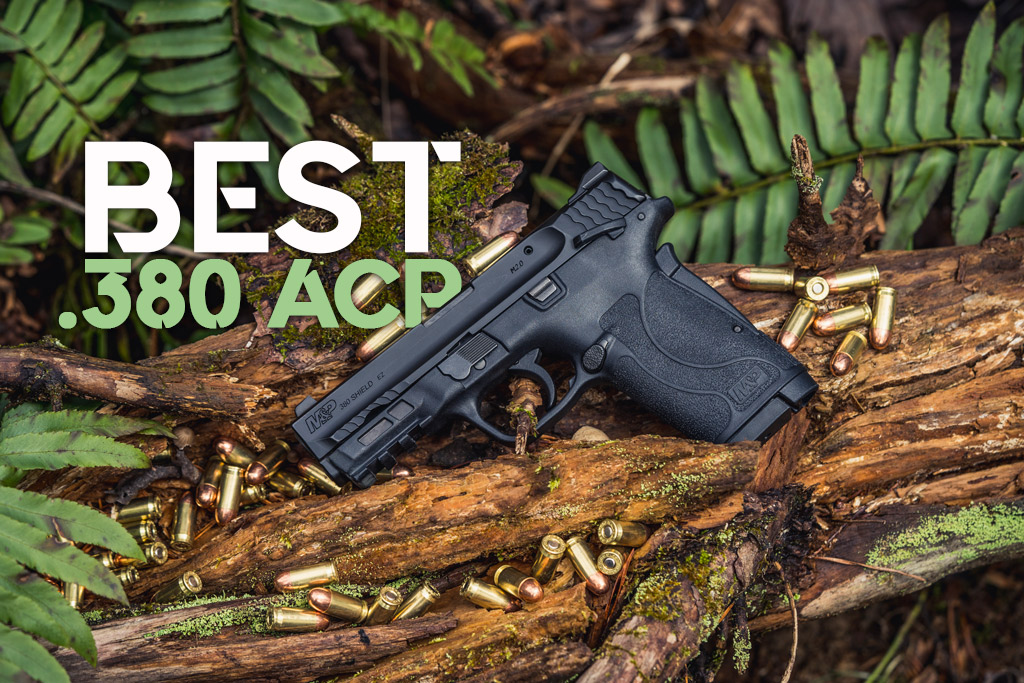
The .380 ACP is enjoying a very healthy resurgence in this modern age. The best 380 ACP ammo might be more popular now than when it first came out in the early 20th century. Initially designed for use in simple blowback pistols, it really found its stride in the last decade or so thanks to advances in metal alloys and polymers.
The original steel-frame pistols in .380 ACP were much heavier than modern pistols in the caliber, which is why the .25 ACP and .32 ACP were used; they were the only real way to get a truly micro compact, deep concealment pistol: the tradeoff for pistol weight and dimensions was caliber.
Best 380 Ammo
When compiling our list of the best .380 ammo, we considered availability, performance, and reliability. With that in mind, our list of the best .380 ACP ammo includes:
Range Training Ammo
.380 Auto Federal American Eagle 95 Grain FMJ
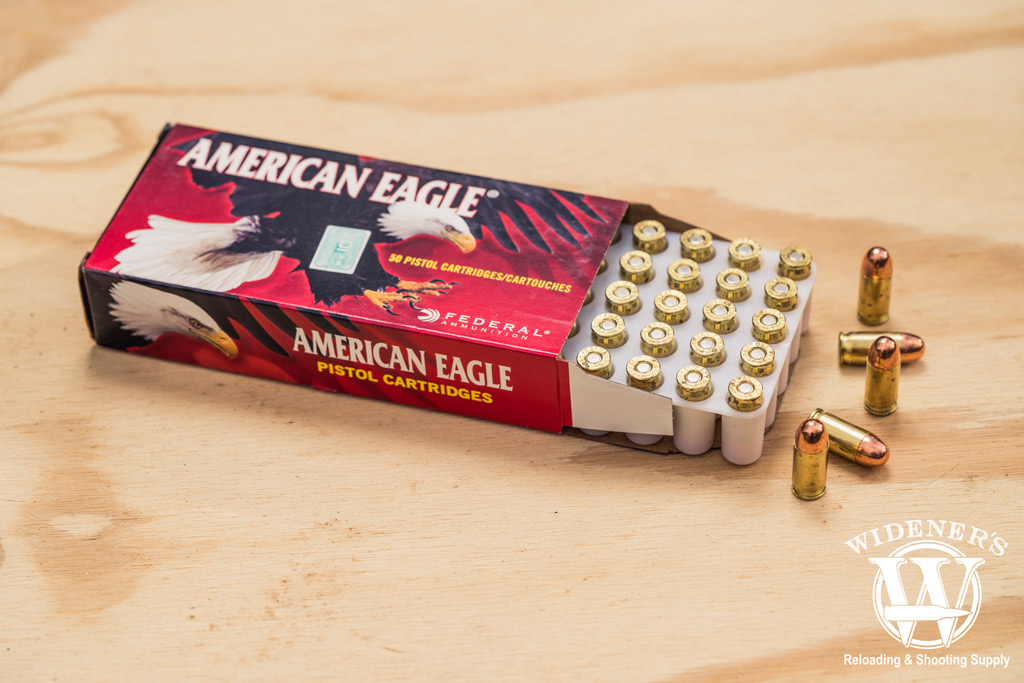
The Federal American Eagle line is popular with range shooters for training and plinking.
Federal American Eagle is popular because it is inexpensive, has brass cases, and goes ‘bang’ when you pull the trigger. I recommend buying the best 380 ammo you can for two reasons. When training, if you use junk ammunition, you will get junk results. I like to spend time shooting guns, not cleaning them. Shooting cheap dirty ammo means the gun owner spends much more time spent cleaning afterward.
The AE 95gr FMJ is a fine choice to break in a new weapon, as well as maintain proficiency with your chosen weapon. It is advertised at 980 feet per second and 203 ft/lbs at the muzzle. The AE 95 gr FMJ shows 937 feet per second at 25 yards, 899 feet per second at 50 yards, 865 feet per second at 75 yards, and 835 feet per second at 100 yards. The .380 ACP is most similar to the .38 Special in performance, but the concealment and capacity advantage is valuable.
| Caliber | Bullet Type | Bullet Weight | Velocity (Muzzle) | Energy (Muzzle) | 25 Yards (Velocity/Energy) | 50 Yards (Velocity/Energy) | 100 Yards (Velocity/Energy) |
|---|---|---|---|---|---|---|---|
| .380 ACP | FMJ | 95gr | 980 FPS | 203 FT LBS | 937 FPS/185 FT LBS | 899 FPS/170 FT LBS | 835 FPS/147 FT LBS |
 PMC 380 Auto 90 Grain FMJ – 1000 Rounds
$349.85
Shop Now
PMC 380 Auto 90 Grain FMJ – 1000 Rounds
$349.85
Shop Now
 PMC 380 Auto 90 Grain FMJ - 50 Rounds
$23.85
Shop Now
PMC 380 Auto 90 Grain FMJ - 50 Rounds
$23.85
Shop Now
 Fiocchi 380 Auto 95 Grain FMJ – 1000 Rounds
$324.85
Shop Now
Fiocchi 380 Auto 95 Grain FMJ – 1000 Rounds
$324.85
Shop Now
 Federal 380 ACP 95 Grain American Eagle FMJ - 50 Rounds
$21.85
Shop Now
Federal 380 ACP 95 Grain American Eagle FMJ - 50 Rounds
$21.85
Shop Now
 380 Auto Federal American Eagle 95 Grain FMJ – 1000 Rounds
$359.86
Shop Now
380 Auto Federal American Eagle 95 Grain FMJ – 1000 Rounds
$359.86
Shop Now
 Winchester 380 Auto 95 Grain FMJ – 50 Rounds
$25.85
Shop Now
Winchester 380 Auto 95 Grain FMJ – 50 Rounds
$25.85
Shop Now
 CCI 380 ACP 95 Grain Blazer Brass FMJ - 50 Rounds
$25.85
Shop Now
CCI 380 ACP 95 Grain Blazer Brass FMJ - 50 Rounds
$25.85
Shop Now
 PMC Battle Pack 380 Auto 90 Grain FMJ - 900 Rounds
$334.85
Shop Now
PMC Battle Pack 380 Auto 90 Grain FMJ - 900 Rounds
$334.85
Shop Now
 MAXXTech 380 Auto 95 Grain FMJ – 1000 Rounds
$349.85
Shop Now
MAXXTech 380 Auto 95 Grain FMJ – 1000 Rounds
$349.85
Shop Now
 MAXXTech 380 Auto 95 Grain FMJ – 50 Rounds
$21.85
Shop Now
MAXXTech 380 Auto 95 Grain FMJ – 50 Rounds
$21.85
Shop Now
 Sellier & Bellot 380 Auto 92 Grain FMJ - 50 Rounds
$19.85
Shop Now
Sellier & Bellot 380 Auto 92 Grain FMJ - 50 Rounds
$19.85
Shop Now
 Sellier & Bellot 380 Auto 92 Grain FMJ - 1000 Rounds
$314.85
Shop Now
Sellier & Bellot 380 Auto 92 Grain FMJ - 1000 Rounds
$314.85
Shop Now





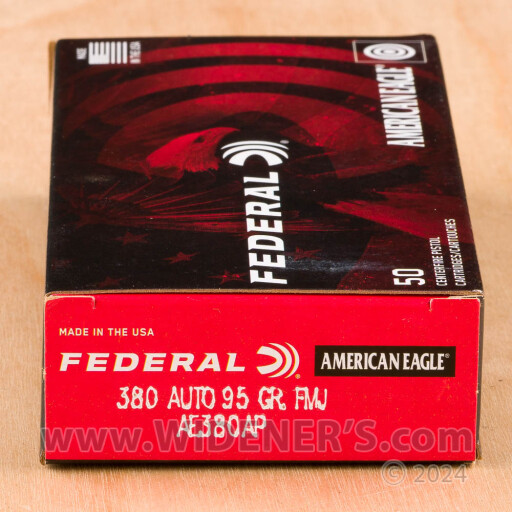
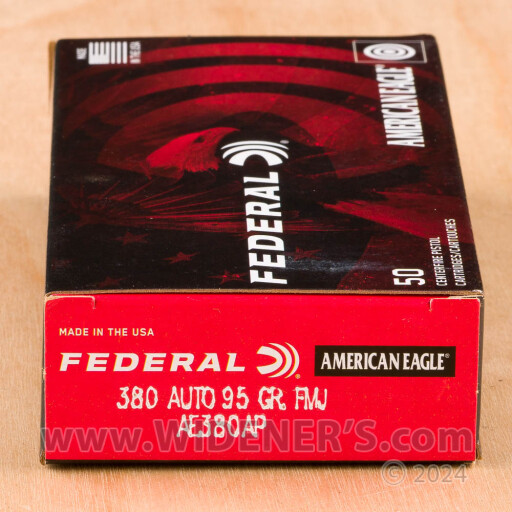




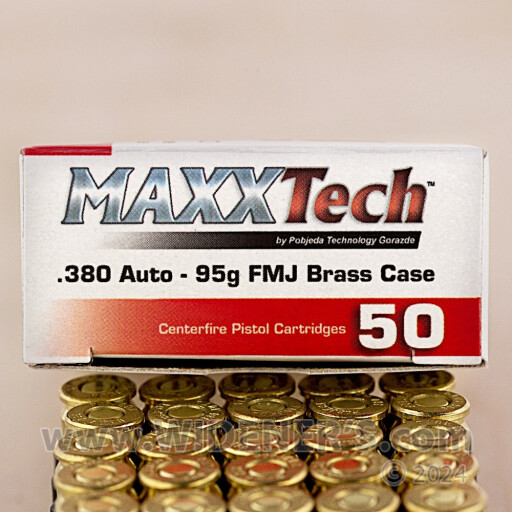


Fiocchi 380 Auto 95 Grain FMJ
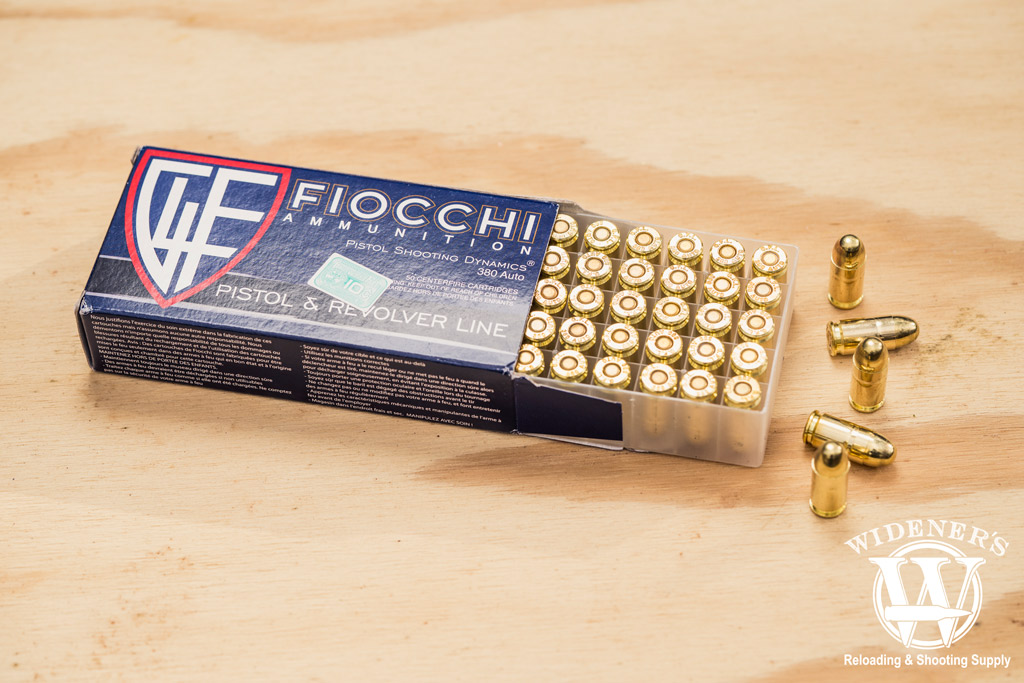
The Fiocchi pistol and revolver line performs as well as it looks. It’s always fun to open a new box at the range.
Fiocchi 380 Auto does advertise higher performance at the muzzle with 1,000 fps and 215 ft/lbs of energy than its competitors, but who’s counting? Fiocchi fires cleanly and is as accurate as any of the other prominent brands. It is also easy to purchase inexpensively. Fiocchi uses a reloadable brass case and will work fine in any modern .380 ACP pistol.
| Caliber | Bullet Type | Bullet Weight | Velocity (Muzzle) | Energy (Muzzle) | 25 Yards (Velocity/Energy) | 50 Yards (Velocity/Energy) | 100 Yards (Velocity/Energy) |
|---|---|---|---|---|---|---|---|
| .380 ACP | FMJ | 95gr | 1,000 FPS | 205 FT LBS | 955 FPS/192 FT LBS | 918 FPS/178 FT LBS | 850 FPS/152 FT LBS |
 PMC 380 Auto 90 Grain FMJ – 1000 Rounds
$349.85
Shop Now
PMC 380 Auto 90 Grain FMJ – 1000 Rounds
$349.85
Shop Now
 PMC 380 Auto 90 Grain FMJ - 50 Rounds
$23.85
Shop Now
PMC 380 Auto 90 Grain FMJ - 50 Rounds
$23.85
Shop Now
 Fiocchi 380 Auto 95 Grain FMJ – 1000 Rounds
$324.85
Shop Now
Fiocchi 380 Auto 95 Grain FMJ – 1000 Rounds
$324.85
Shop Now
 Federal 380 ACP 95 Grain American Eagle FMJ - 50 Rounds
$21.85
Shop Now
Federal 380 ACP 95 Grain American Eagle FMJ - 50 Rounds
$21.85
Shop Now
 380 Auto Federal American Eagle 95 Grain FMJ – 1000 Rounds
$359.86
Shop Now
380 Auto Federal American Eagle 95 Grain FMJ – 1000 Rounds
$359.86
Shop Now
 Winchester 380 Auto 95 Grain FMJ – 50 Rounds
$25.85
Shop Now
Winchester 380 Auto 95 Grain FMJ – 50 Rounds
$25.85
Shop Now
 CCI 380 ACP 95 Grain Blazer Brass FMJ - 50 Rounds
$25.85
Shop Now
CCI 380 ACP 95 Grain Blazer Brass FMJ - 50 Rounds
$25.85
Shop Now
 PMC Battle Pack 380 Auto 90 Grain FMJ - 900 Rounds
$334.85
Shop Now
PMC Battle Pack 380 Auto 90 Grain FMJ - 900 Rounds
$334.85
Shop Now
 MAXXTech 380 Auto 95 Grain FMJ – 1000 Rounds
$349.85
Shop Now
MAXXTech 380 Auto 95 Grain FMJ – 1000 Rounds
$349.85
Shop Now
 MAXXTech 380 Auto 95 Grain FMJ – 50 Rounds
$21.85
Shop Now
MAXXTech 380 Auto 95 Grain FMJ – 50 Rounds
$21.85
Shop Now
 Sellier & Bellot 380 Auto 92 Grain FMJ - 50 Rounds
$19.85
Shop Now
Sellier & Bellot 380 Auto 92 Grain FMJ - 50 Rounds
$19.85
Shop Now
 Sellier & Bellot 380 Auto 92 Grain FMJ - 1000 Rounds
$314.85
Shop Now
Sellier & Bellot 380 Auto 92 Grain FMJ - 1000 Rounds
$314.85
Shop Now














Best 380 Self-Defense Ammo
Federal Premium Low Recoil 380 Auto 90 Grain Hydra-Shok JHP
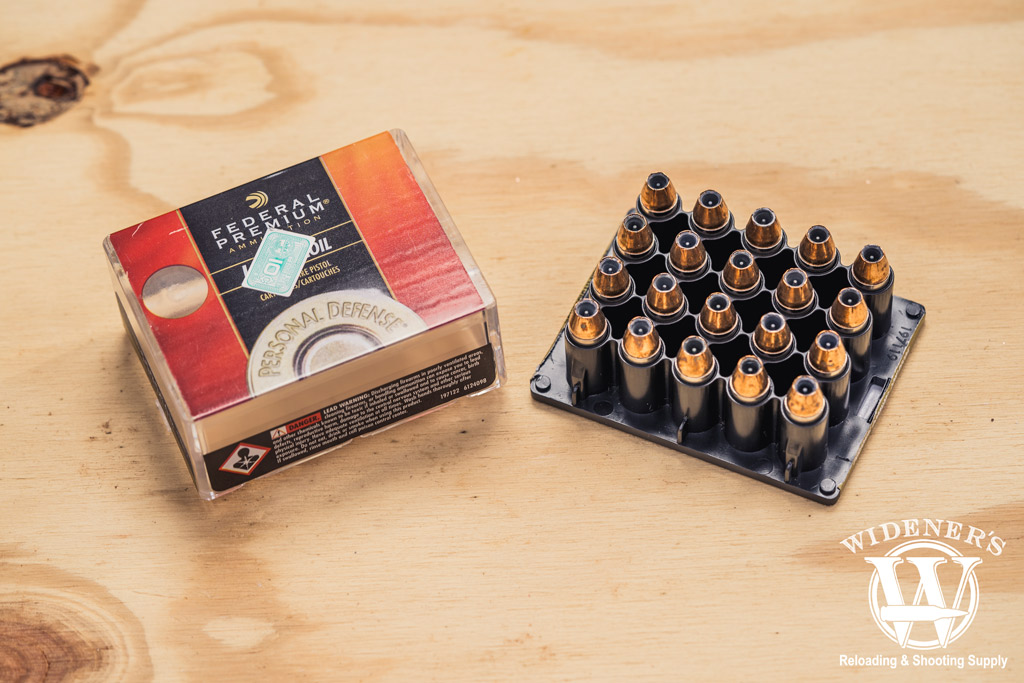
Low-recoil Federal Premium JHP ammo allows the shooter to stay on target with follow-up shots.
In a firearm that has already traded capacity and stopping power for concealability, why would anyone opt for low recoil ammunition with reduced power? I can think of one good reason, the ease of ability to fire a follow-up shot. Full power rounds make follow-up shots all but impossible for less-skilled shooters using diminutive pocket pistols, which is exactly the reason Federal Premium created their Low Recoil offerings with their Hydra Shok ® bullets. Low Recoil ammo equals less stopping power traded for enhanced ability to take the follow-up shot. Sometimes the follow-up shot makes all the difference in self-defense situations.
The Federal Premium Low Recoil 380 Auto 90 Grain Hydra-Shok JHP still carries decent ballistics with 1,000fps and 200 ft/lbs at the muzzle.
| Caliber | Bullet Type | Bullet Weight | Velocity (Muzzle) | Energy (Muzzle) | 25 Yards (Velocity/Energy) | 50 Yards (Velocity/Energy) | 100 Yards (Velocity/Energy) |
|---|---|---|---|---|---|---|---|
| .380 ACP | JHP | 90gr | 1,000 FPS | 200 FT LBS | 953 FPS/182 FT LBS | 914 FPS/167 FT LBS | 847 FPS/143 FT LBS |
 Fiocchi Shooting Dynamics 380 Auto 90 Grain JHP - 50 Rounds
$26.85
Shop Now
Fiocchi Shooting Dynamics 380 Auto 90 Grain JHP - 50 Rounds
$26.85
Shop Now
 Fiocchi Shooting Dynamics 380 Auto 90 Grain JHP - 1000 Rounds
$383.85
Shop Now
Fiocchi Shooting Dynamics 380 Auto 90 Grain JHP - 1000 Rounds
$383.85
Shop Now
 Winchester Supreme Elite PDX1 380 Auto 95 Grain JHP – 20 Rounds
$27.85
Shop Now
Winchester Supreme Elite PDX1 380 Auto 95 Grain JHP – 20 Rounds
$27.85
Shop Now
 Federal Premium 380 Auto 90 Grain Hydra-Shok JHP - 20 Rounds
$27.00
Shop Now
Federal Premium 380 Auto 90 Grain Hydra-Shok JHP - 20 Rounds
$27.00
Shop Now
 Speer 380 ACP 90 Grain JHP - 20 Rounds
$29.85
Shop Now
Speer 380 ACP 90 Grain JHP - 20 Rounds
$29.85
Shop Now
 Speer LE Gold Dot 380 Auto 90 Grain JHP – 50 Rounds
$41.85
Shop Now
Speer LE Gold Dot 380 Auto 90 Grain JHP – 50 Rounds
$41.85
Shop Now
 Remington UMC 380 Auto 88 Grain JHP – 600 Rounds
$384.85
Shop Now
Remington UMC 380 Auto 88 Grain JHP – 600 Rounds
$384.85
Shop Now
 Prvi Partizan 380 ACP 94 Grain JHP - 50 Rounds
$25.85
Shop Now
Prvi Partizan 380 ACP 94 Grain JHP - 50 Rounds
$25.85
Shop Now
 Barnes 380 Auto 80 Grain Barnes TAC-XP JHP – 20 Rounds
$28.85
Shop Now
Barnes 380 Auto 80 Grain Barnes TAC-XP JHP – 20 Rounds
$28.85
Shop Now
 Speer LE Gold Dot 380 Auto 90 Grain JHP – 1000 Rounds
$799.85
Shop Now
Speer LE Gold Dot 380 Auto 90 Grain JHP – 1000 Rounds
$799.85
Shop Now
 Prvi Partizan 380 Auto 94 Grain JHP - 1000 Rounds
$485.85
Shop Now
Prvi Partizan 380 Auto 94 Grain JHP - 1000 Rounds
$485.85
Shop Now
 Winchester Supreme Elite PDX1 380 Auto 95 Grain JHP – 200 Rounds
$259.85
Shop Now
Winchester Supreme Elite PDX1 380 Auto 95 Grain JHP – 200 Rounds
$259.85
Shop Now
 Corbon 380 Auto 90 Grain JHP – 20 Rounds
$17.85
Shop Now
Corbon 380 Auto 90 Grain JHP – 20 Rounds
$17.85
Shop Now
 Black Hills 380 Auto 90 Grain JHP – 20 Rounds
$18.85
Shop Now
Black Hills 380 Auto 90 Grain JHP – 20 Rounds
$18.85
Shop Now
 Hornady American Gunner 380 Auto 90 Grain JHP - 25 Rounds
$22.85
Shop Now
Hornady American Gunner 380 Auto 90 Grain JHP - 25 Rounds
$22.85
Shop Now
 Federal Personal Defense 380 Auto 99 Grain HST JHP – 20 Rounds
$29.85
Shop Now
Federal Personal Defense 380 Auto 99 Grain HST JHP – 20 Rounds
$29.85
Shop Now
 Federal Premium 380 Auto 99 Grain HST JHP - 50 Rounds
$42.99
Shop Now
Federal Premium 380 Auto 99 Grain HST JHP - 50 Rounds
$42.99
Shop Now
 Remington Ultimate Defense 380 Auto 102 Grain BJHP - 20 Rounds
$19.85
Shop Now
Remington Ultimate Defense 380 Auto 102 Grain BJHP - 20 Rounds
$19.85
Shop Now
 Federal Punch 380 Auto 85 Grain JHP – 20 Rounds
$19.85
Shop Now
Federal Punch 380 Auto 85 Grain JHP – 20 Rounds
$19.85
Shop Now
 Hornady American Gunner 380 Auto 90 Grain XTP JHP – 250 Rounds
$204.85
Shop Now
Hornady American Gunner 380 Auto 90 Grain XTP JHP – 250 Rounds
$204.85
Shop Now



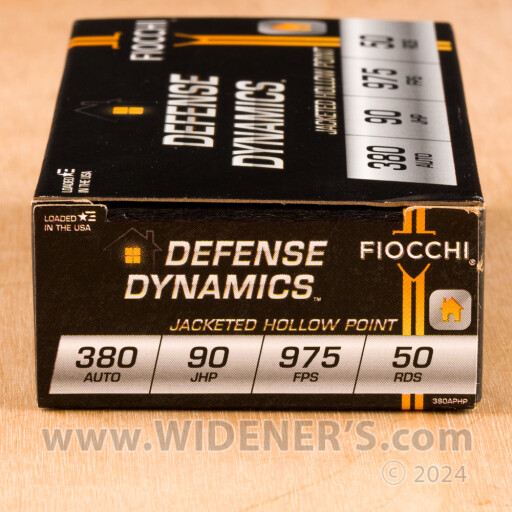
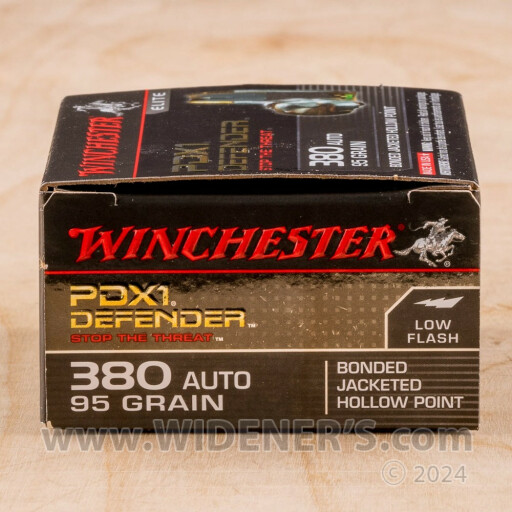
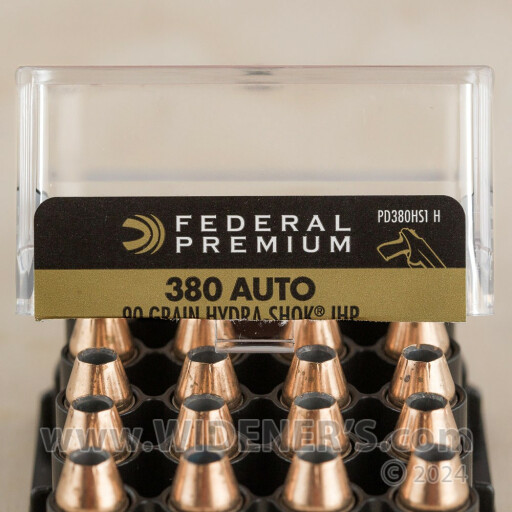


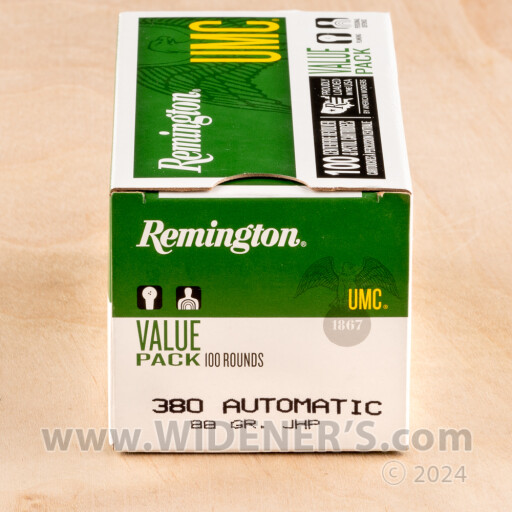

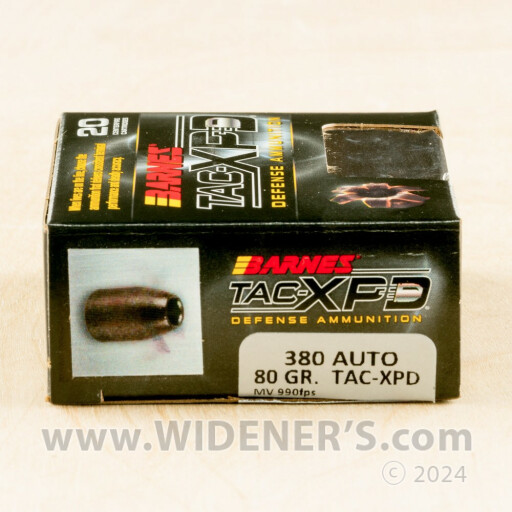




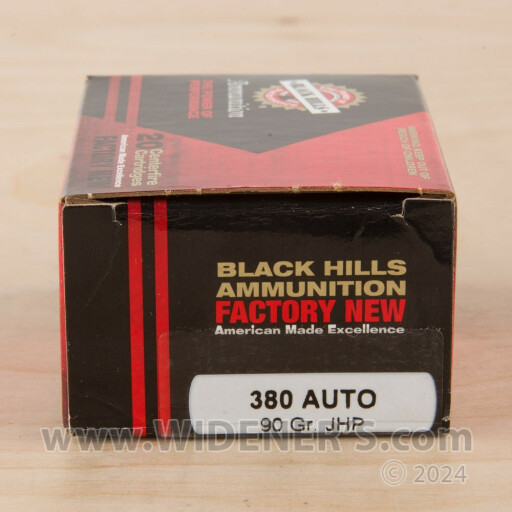
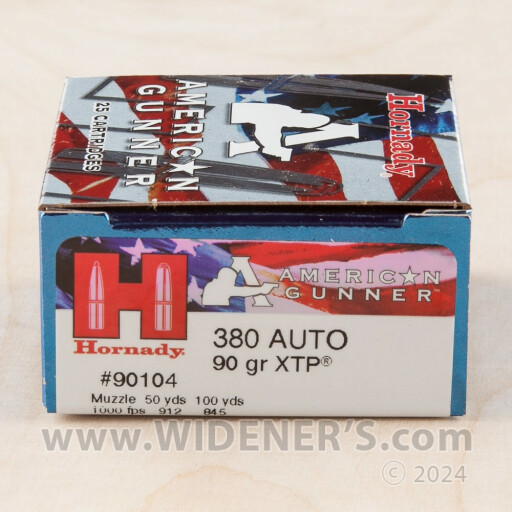





Hornady 380 ACP 90 Grain Critical Defense FTX
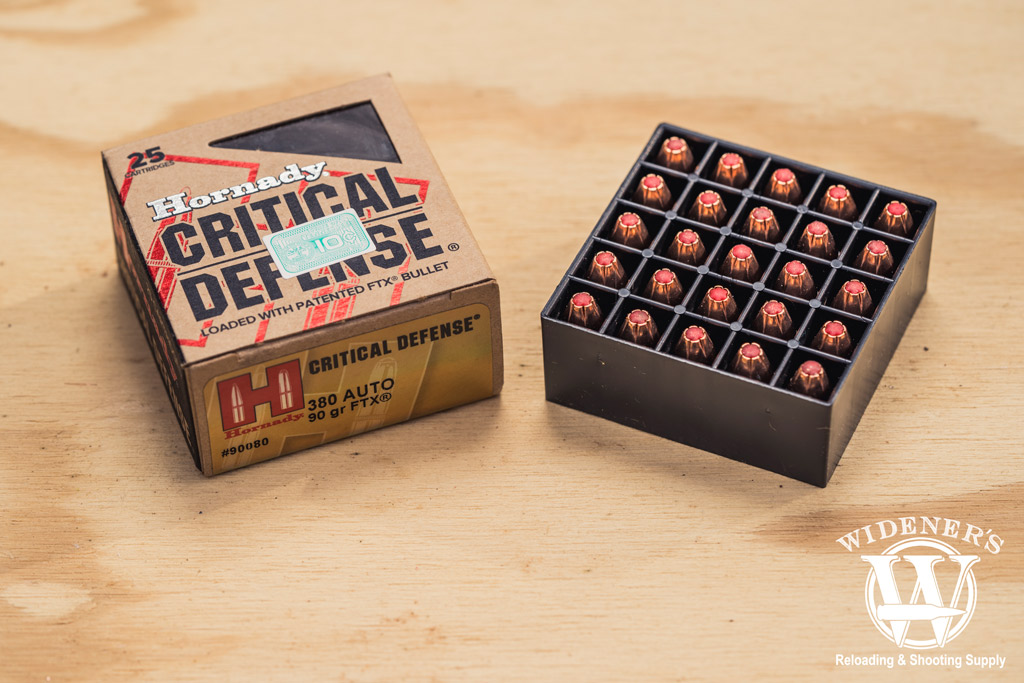
The Hornady Critical Defense line features the penetrating power of the FTX bullet.
The ammunition that is currently in all of my handguns, Hornady Critical Defense ® FTX ® is a great choice for defensive posturing in environments where you may need to fire through targets wearing thick clothing (cold climates) and through glass. Makers of the JHP bullet molded it with a polymer plug in the cavity. This keeps it from clogging when making initial contact with objects other than flesh.
The ballistics for it are identical to the Low Recoil Hydra Shok® and are fairly consistent with other .380 ACP loads of 90gr. A wise king once said: “there is nothing new under the sun.”
| Caliber | Bullet Type | Bullet Weight | Velocity (Muzzle) | Energy (Muzzle) | 25 Yards (Velocity/Energy) | 50 Yards (Velocity/Energy) | 100 Yards (Velocity/Energy) |
|---|---|---|---|---|---|---|---|
| .380 ACP | FTX | 90gr | 1,000 FPS | 200 FT LBS | 955 FPS/185 FT LBS | 912 FPS/166 FT LBS | 845 FPS/143 FT LBS |
Cartridge Specs
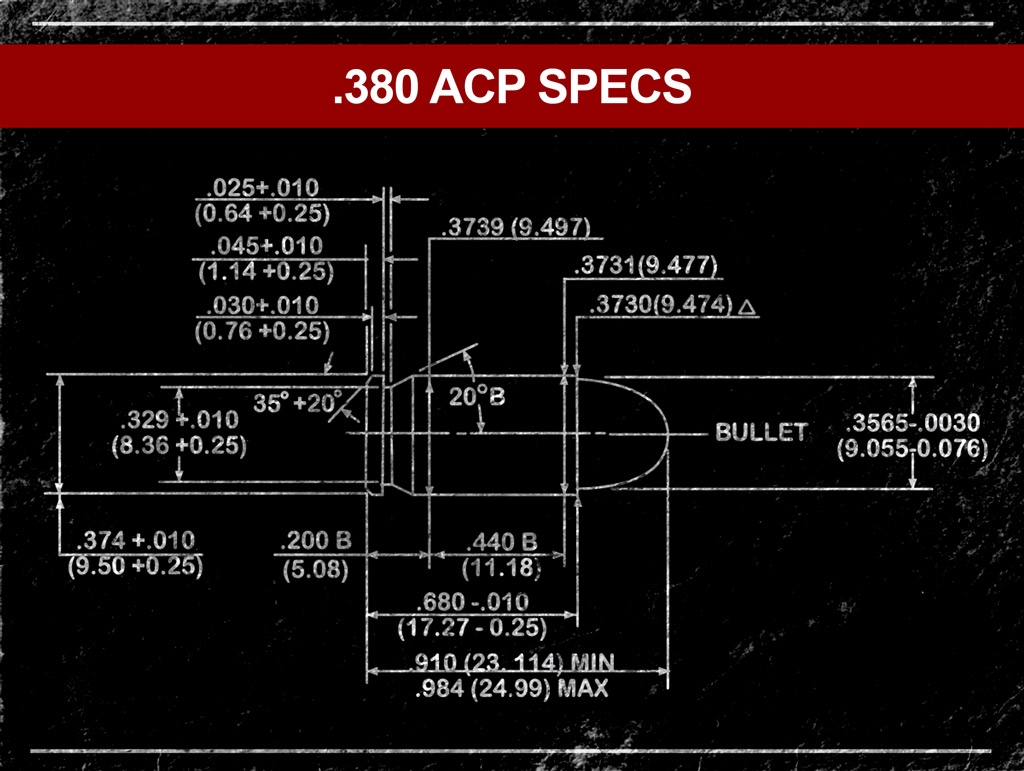
Although similar in size, the .380 ACP outperforms the .32 ACP in every category.
.380 ACP offers close-range performance with low recoil. It typically comes in bullet weights ranging from 90 to 100 grains, offering a good balance of velocity and energy. Its dimensions allow for use in high-capacity magazines, however, it’s more often found loaded in single-stack magazines, than in double-stacks. In terms of size, it’s smaller than a 9mm bullet but slightly larger than the similar .32 ACP round.
| Cartridge Specs | .380 ACP |
|---|---|
| Parent Casing | N/A |
| Bullet Diameter | .355″ |
| Neck Diameter | .373″ |
| Base Diameter | .374″ |
| Case Length | .680″ |
| Overall Length | .984″ |
| Grain Weight | 45-100gr |
| Max Pressure (SAMMI) | 21,500 PSI |
380 ACP Ammo Quick Answer Box:
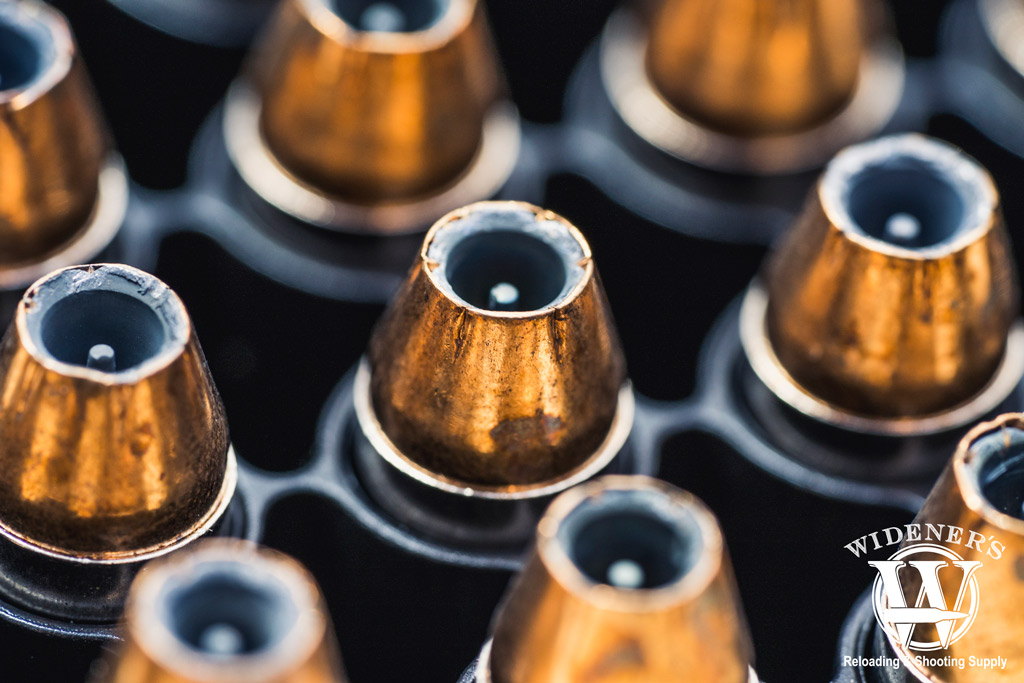
If deep concealment and low recoil are important factors, the .380 ACP is hard to beat.
Why Is 380 ACP Ammo Expensive?
Several years ago, my very first deep-concealment pistol was a Beretta 950 chambered in .25 ACP. It was fun to shoot, but the problem was the cost of ammo. Although the .25 ACP and the 9mm look similar in shape, the .25 ACP wasn’t nearly as effective and cost almost $5 more per box.
The same holds true for .380 ACP ammunition. It costs more to manufacture than its slightly bigger parabellum brother. But even with a recent surge in popularity, the amount of .380 ACP manufacturers produce and the caliber’s ballistics can’t touch that of the 9mm. What keeps the cost of the 9mm down is being the NATO standard pistol round and being used by the majority of U.S. law enforcement agencies. Ask any manufacturer, they make more 9mm, which allows them to keep the costs lower. The higher pricing of the .380 ACP cartridge comes down to simple supply and demand.
.380 ACP vs. 9mm: What’s The Difference?
Unlike the multitude of .30 caliber rifle rounds which share a common bullet but have different cases to change the performance of the bullet, the .380 ACP and 9mm Luger don’t fire the same projectile. The .380 ACP bullet is shorter and lighter to accommodate the 2mm shorter case of the .380. The result is a cartridge that is lighter by necessity to ensure that the projectile is short enough to function properly.
This leads to considerably lighter bullet weights loaded in .380 ACP than 9mm, with 95 grain being the most common weight (or very close to that) for FMJ, MC, and LRN bullets. Hollow points commonly range from 85 grains to 102 grains. The three most common bullet weights for the 9mm are 115gr, 124gr, and 147gr. These two calibers share a common .355” diameter, however, they are not intended for the same purposes.
Generally speaking, 9mm ammo will give you increased power. It’s faster and will often penetrate deeper into a soft target than 380 ACP will.
Is .380 ACP A Good Self-Defense Option?
When carrying concealed, it’s best to choose a weapon that is chambered in a caliber that you can safely and effectively fire in a high-stress situation. For many, the small imprint and high-capacity of handguns that fire .380 ACP cartridges fit the bill nicely.
If it is the heat of summer and a pocket pistol is all I can realistically carry concealed, 380 ACP is a very good self-defense option. Its ballistics are superior to a .22LR, .25 ACP, or any of the other calibers used in pocket pistols over the years. The performance is most similar to the .38 Special, it can be used in platforms even smaller and lighter than snubnosed revolvers. Plus, it gives me a higher capacity.
A popular myth persists that tiny pistols and revolvers are good for smaller-frame shooters, especially small female shooters. I’m debunking this erroneous myth. Sub-compact and Micro pistols, which are the most prevalent offerings of the .380 ACP caliber, are often very hard to shoot. Many shooters find these small framed pistols too small to hold correctly.
These tiny pistols and revolvers also have significant recoil due to their lightweight and lack of mass. They are also generally inaccurate beyond five feet due to extremely short barrels and low-profile fixed sights. Pocket pistols are intended to be carried in a pocket and pulled without snagging on clothing. They are ideal for being fired at very close-range targets.
Smaller framed shooters (or those with large hands) should consider a larger .380 ACP pistol (based on a full-size pistol). Otherwise, step up to one of the numerous 9mm pistols which feature a grip large enough to shoot effectively. Find a gun range that lets you rent, so you can try a variety of pistols. This is always a smart idea, so you can find what works best for you.
Should You Buy A 380 ACP Handgun?
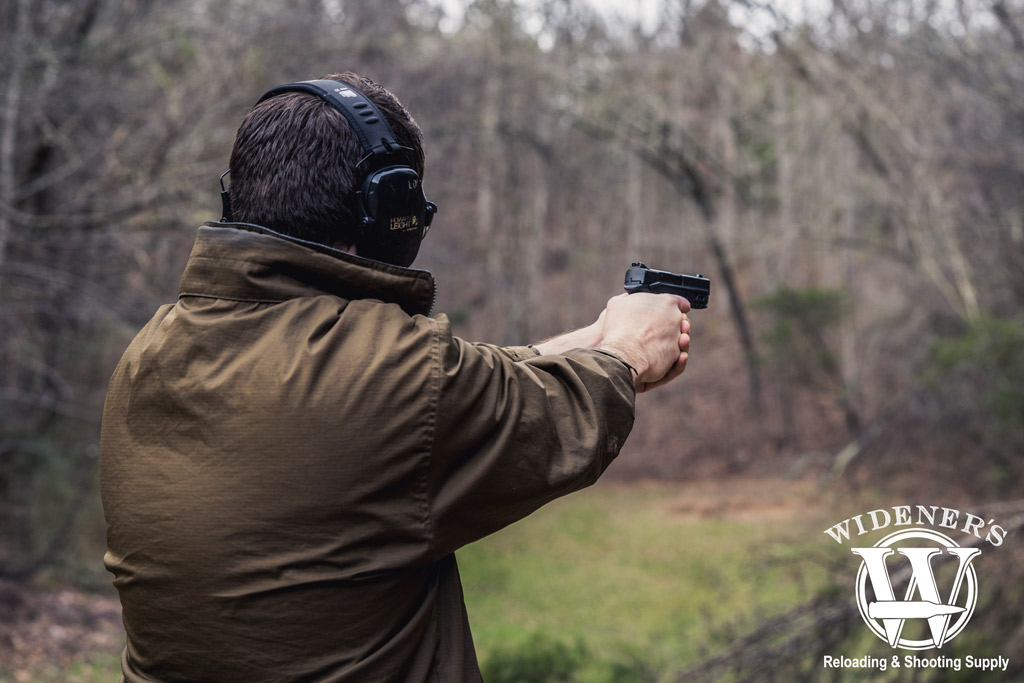
When choosing a pistol, find an easy-to-use gun in a caliber that you are comfortable with shooting.
.380 ACP handguns have become very popular in the 21st century after a fairly significant hiatus after their introduction in 1908.
Thanks to manufacturers like Glock, Ruger, and Smith & Wesson changing the game with polymer pocket pistols, the useful caliber was revitalized and is now more popular than ever. The .380 ACP is a viable cartridge as long as you take the time to understand it. Meaning, you take the time to understand its limitations and don’t ask for more than it is capable of delivering.
For deep concealment, especially in the hot months, a .380 ACP pocket pistol is ideal. It lacks the bulk and concealment limitations of a full-sized pistol. For example, a Ruger LCP, or Glock 42 pistol tucked into an IWB holster conceals easily under a tee-shirt. In situations where attire allows for nothing else, the .380 ACP provides a comfortable and reliable pocket pistol option. You are much better off with a pocket pistol in .380 ACP than forgoing carrying altogether because of legitimate discomfort.


